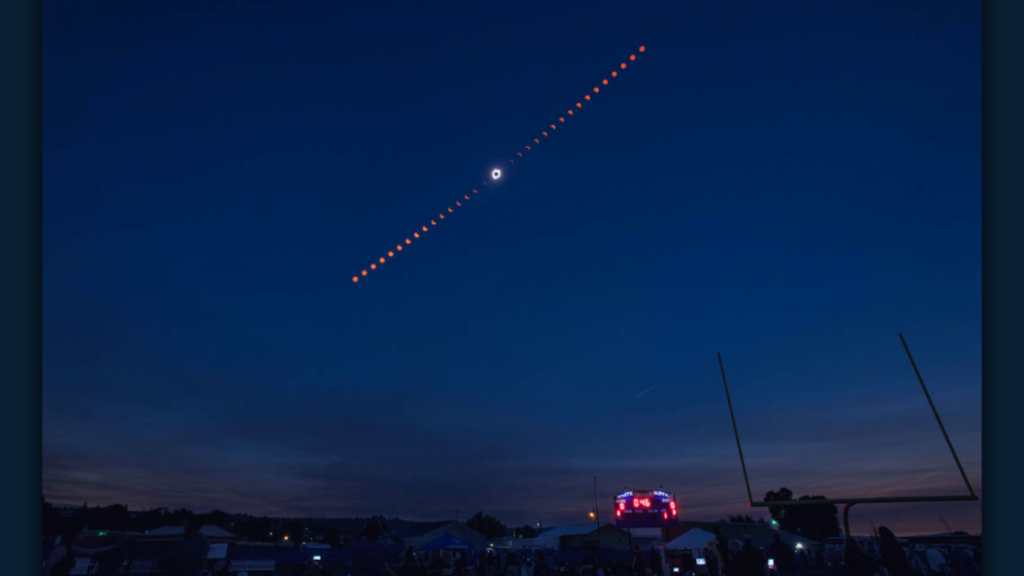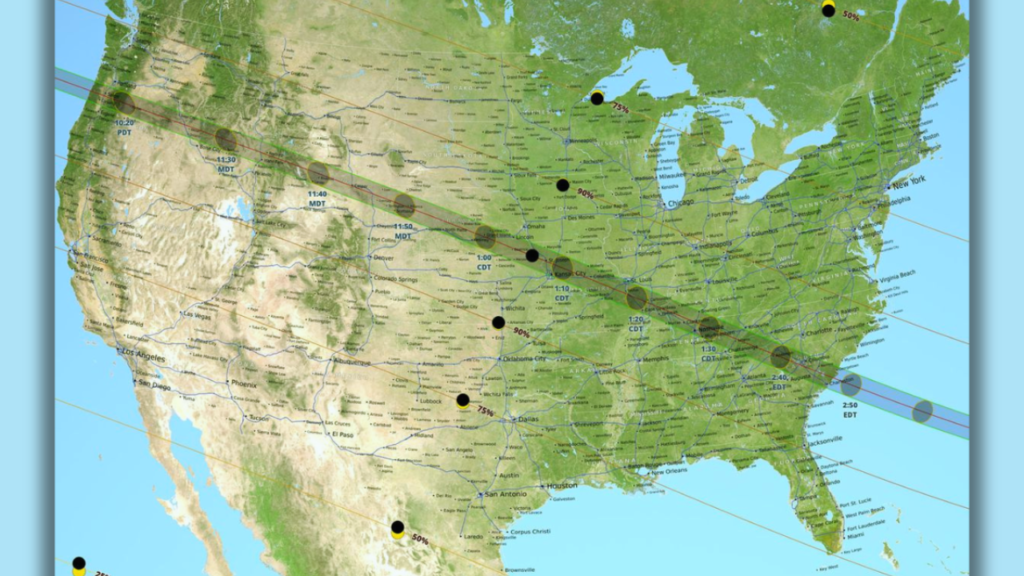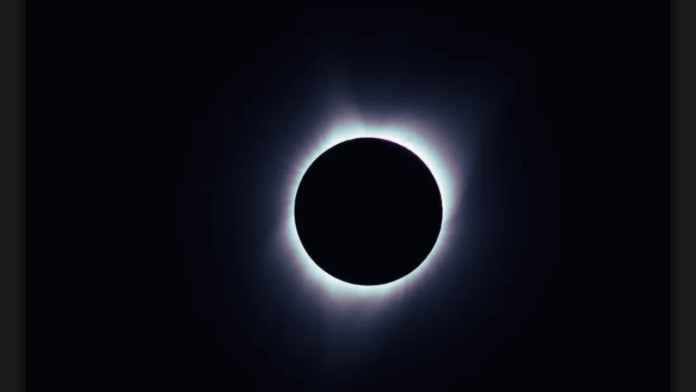On April 8, millions of people will see a total solar eclipse time in india as the Moon’s shadow moves across the country. Many people associate the preparations for this event with the amazing total solar eclipse that occurred on August 21, 2017.
Photographs of the August 21, 2017, total solar eclipse time in india were taken from Madras, Oregon. The Moon is the dark circle in the center. It is surrounded by white light streams known as the corona, which are part of the Sun’s outer atmosphere.
Aubrey Gemignani of NASA
A projected 215 million American adults (88% of all adults in the country) watched the solar eclipse time in india in 2017 either in person or through an electronic device. They witnessed the Moon pass in front of the Sun, obstructing all or a portion of the bright face of our nearest star. The 2024 eclipse may present even greater excitement because of variations in the path, timing, and scientific research.
More Extended and Dense Path

The forthcoming total solar eclipse time in india will have a substantially wider path of totality than the eclipse in 2017, which allows spectators to witness the Moon completely obstruct the Sun and reveal the corona, the star’s outer atmosphere. The Moon’s distance from Earth varies as it revolves around the planet.
The path of the upcoming total solar eclipse will be slightly narrower than it will be during the 2017 eclipse because the Moon was slightly farther away from Earth during that eclipse. The width of the path varied between 62 and 71 miles in 2017. The eclipse in April will cross North America in a path that is between 108 and 122 miles wide at any given time. this eclipse covers more ground.
Moreover, compared to the 2017 path, the eclipse in 2024 will cross through more cities and densely populated areas. More people will find it simpler to see totality as a result of this. This year, 31.6 million people are expected to live in the path of totality, up from 12 million in 2017. Within 200 miles of the path of totality reside an additional 150 million people.
This map illustrates the route of the total solar eclipse time in india in 2017 (which traveled from Oregon to South Carolina) and 2024 (which traveled from Mexico into Texas, up through Maine, and out of sight over Canada).

Click the arrows to view a map indicating which locations will see a partial solar eclipse time in india and which locations will see a total solar eclipse on April 8, 2024.
99% of Americans will be able to view the partial or total eclipse in April from their place of residence; you do not need to be within the eclipse’s path of totality to witness it. There will be a partial solar eclipse in every state that is part of the United States, as well as in some areas of Alaska and Hawaii.
Extended Duration in Totality
Totality is expected to last longer in April than it did in 2017. The greatest duration of totality was recorded seven years ago, at two minutes and forty-two seconds, close to Carbondale, Illinois.
The upcoming eclipse will occur in an area approximately 25 minutes northwest of Torreón, Mexico, with totality lasting up to 4 minutes, 28 seconds. Totality will last approximately 4 minutes and 26 seconds at the eclipse’s center as it crosses into Texas. As far north as Economy, Indiana, are included in durations longer than 4 minutes. The eclipse will continue for up to three minutes and twenty-one seconds after it leaves the United States and enters Canada.
Any total solar eclipse has totality that lasts longest near the center of the path and gets shorter toward the edge. It is not necessary for those pursuing totality to be precisely in the center, though. Till you approach the edge, the total time decreases rather gradually.
About every eleven years, the Sun’s magnetic field reverses, resulting in a cycle of rising and falling solar activity. Massive solar eruptions like coronal mass ejections and solar flares are less common during solar minimum. Nevertheless, the Sun becomes more active during solar maximum.
The Sun was getting close to solar minimum in 2017. The spectacular corona was visible to those watching the total eclipse, but only the equatorial parts of the star could see streamers entering the solar atmosphere because the Sun was quiet.
This simpler appearance is due to the Sun’s increased magnetic symmetry during solar minimum. The Sun will be in or near solar maximum during the 2024 eclipse, which is when the magnetic field is more akin to a tangled hairball. Across the corona, streamers should be visible. Furthermore, there will be a greater opportunity for viewers to see prominences, which are visible as bright, pink loops or curls emanating from the Sun.

If fortune favors you, you may even be able to witness a coronal mass ejection, or massive outburst of solar material, during the eclipse.
NASA is supporting a number of research projects that expand on work conducted during the 2017 eclipse and will take place during the total eclipse in 2024. Researchers from various academic institutions are leading these projects, which will use a range of instruments to study the Sun and its impact on Earth. These instruments include ham radios, cameras on high-altitude research planes, and more. Apart from those initiatives, there are plans to launch instruments on three sounding rockets during the upcoming total solar eclipse, which was first done during the annular solar eclipse in 2023.
Since the 2017 solar eclipse, NASA’s Parker Solar Probe and ESA’s (European Space Agency) Solar Orbiter, two spacecraft intended to study the Sun’s corona, have also launched. While viewers on Earth see it with their own eyes, these missions will provide insights from the corona itself, offering an exciting opportunity to combine and compare viewpoints.
Visit NASA’s eclipse website to find out more about the 2024 total solar eclipse and safe viewing options.

